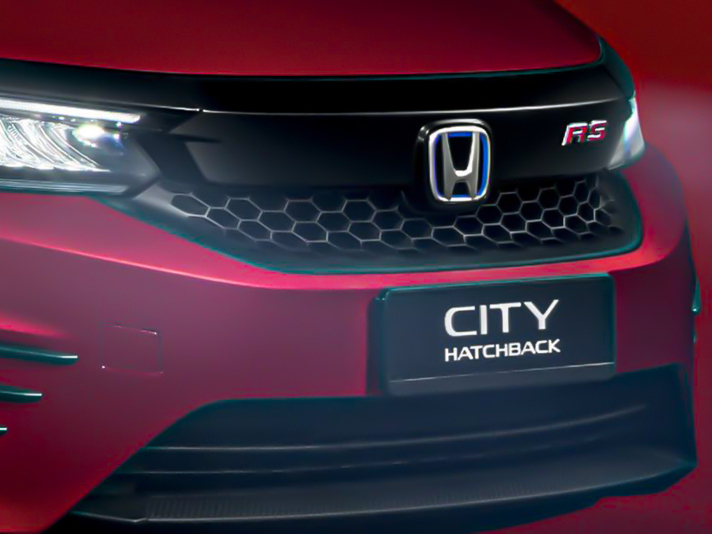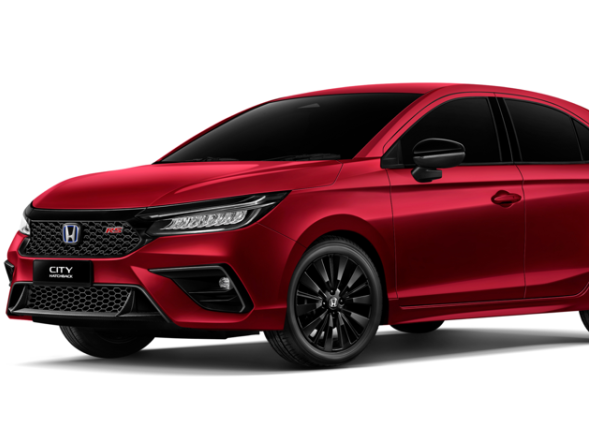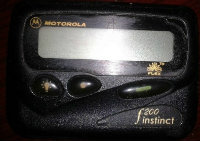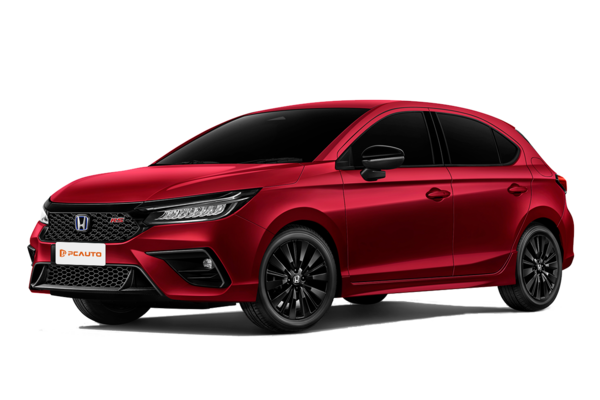Q
How Heavy Is Honda City Hatchback? Check Here to Know
The weight of the Honda City Hatchback varies by different models. The 2024 Honda City Hatchback 1.5 S model weighs 1,149 kilograms; the 1.5 E model weighs 1,151 kilograms; the 1.5 V and 1.5L RS models weigh 1,161 kilograms and 1,163 kilograms respectively. The 2024 RS e:HEV version weighs 1,260 kilograms. Among the 2023 models, the 1.5 S, 1.5 E, 1.5 V and 1.5 V Sensing models all weigh 1,249 kilograms. In 2022, the 1.5 S, 1.5 E, 1.5 V and 1.5 V Sensing models also weighed 1,249 kilograms, while the RS e:HEV weighed 1,151 kilograms. Vehicle weight can affect factors such as fuel efficiency, handling and braking performance. Heavier vehicles may consume more fuel but offer better stability; lighter vehicles may be more agile and more fuel - efficient.
Special Disclaimer: This content is published by users and does not represent the views or position of PCauto.
Related Q&A
Q
How much is a Honda 2021 worth?
The current value of a 2021 Honda depends on factors like the specific model, mileage, condition, and equipment. Take popular models like the City or CR-V – used prices typically range from RM60,000 to RM140,000. Low-mileage, well-maintained high-spec versions will be closer to the upper end. For an accurate valuation, check recent transaction records on local used car platforms or use professional valuation tools by inputting detailed vehicle info for a report. It's worth noting that Hondas hold their value well in the used market, especially hybrid versions, thanks to their reliable powertrains and low maintenance costs. Also, when buying a used Honda, focus on checking the CVT transmission condition and engine service records, and see if the original factory warranty is still valid – these factors significantly impact residual value. For owners considering upgrading, doing a full service and keeping the receipts before selling can help boost the transaction price.
Q
How much is a Honda City hatchback in 2021?
When the 2021 Honda City Hatchback launched locally, it came in two variants: the 1.5L S and 1.5L V, with starting prices of approximately RM75,000 and RM82,000 respectively. Exact pricing could vary depending on optional accessories or promotional offers. Powering this model is a 1.5-liter i-VTEC engine paired with a CVT transmission, focusing on fuel efficiency and practical space. Its hatchback design makes it more suitable for urban driving and cargo needs compared to the traditional sedan version. Key competitors in its class include the Toyota Yaris and Nissan Almera, but the City Hatchback stands out with Honda's Honda Sensing safety suite and the flexible Magic Seat design for the rear row. It's worth noting that used car market prices are influenced by vehicle condition, mileage, and remaining warranty period. Before purchasing, it's advisable to get the latest quotes through official channels and compare after-sales packages from different dealers, such as the number of free maintenance services or extended warranty coverage—these add-ons can impact the overall cost of ownership.
Q
What is the most sold vehicle in 2023?
The world's best-selling vehicle in 2023 was the Toyota RAV4. This compact SUV won over drivers worldwide with its solid reliability, practical interior space, and strong fuel efficiency. Malaysia was no exception – Toyota already enjoys a stellar reputation there, and the RAV4 Hybrid specifically appealed to eco-conscious buyers looking to reduce their carbon footprint.
In Malaysia, alongside the RAV4, local car buyers have long favored affordable, tough-as-nails workhorses like the Perodua Myvi and Proton Saga. These two consistently top the sales charts because they’re perfectly suited to Malaysia’s unique road conditions and fit right into local driving habits and budgets.
What’s really interesting though is the growing buzz around electric vehicles (EVs) in Malaysia, thanks to advancing EV tech. Models like the Tesla Model Y and BYD Atto 3 are starting to turn heads. They haven’t quite dethroned traditional petrol-powered cars yet, but their sales numbers are climbing steadily – definitely a trend to watch.
If you’re in the market for a car in Malaysia, don’t just go by sales figures alone. It’s smart to weigh up factors like fuel consumption (or energy efficiency for EVs), how much maintenance will cost, insurance premiums, and whether the car actually fits your daily driving needs. Do that, and you’ll end up with a ride that’s truly right for you.
Q
What's the safest car in 2023?
The safest cars of 2023 are typically those that scored a full five-star rating from global safety authorities like Euro NCAP or ASEAN NCAP. Think models such as the Volvo XC90, Toyota Corolla Cross, or Honda CR-V – these rides come packed with advanced active and passive safety tech. We're talking pre-collision systems, lane-keeping assist, adaptive cruise control, and up to eight airbags, all working together to keep occupants well-protected when things get hairy.
For Malaysian drivers, picking a safe car means factoring in our unique road conditions and climate too. Features like Electronic Stability Control (ESC) and Anti-lock Braking Systems (ABS) are total must-haves, especially during the rainy season when roads turn slippery. And here's a pro tip: ASEAN NCAP's testing standards are tailored to Southeast Asia's real-world driving environments, so their ratings hit closer to home than generic international data.
But let's not forget – a car's safety isn't just about the specs on paper. Regular maintenance and smart driving habits play a huge role too. Even if you're behind the wheel of a top-safety-rated vehicle, staying alert and focused is still your best defense out there.
Q
What Honda models are being recalled in 2023?
Honda Malaysia issued a recall in 2023 covering several models. The recall primarily affects certain City and City Hatchback units produced between 2020 and 2022, along with specific HR-V models manufactured from 2021 to 2023. The root cause? A potential issue with the fuel pump module that, in worst-case scenarios, could lead to engine stalling – a definite safety concern. If you own one of these, reach out to your local authorized Honda dealer to get the fuel pump module replaced at no cost. Additionally, some 2022 CR-V models were also pulled back due to a problem with the seatbelt pretensioners.
For Honda owners in Malaysia worried if their ride is included, there are a couple of ways to check. Head over to Honda Malaysia's official website and use their recall lookup tool – just plug in your Vehicle Identification Number (VIN). Alternatively, you can give Honda Malaysia's customer service hotline a direct call.
It’s important to remember: a recall is a sign of a manufacturer taking responsibility, aiming to nip potential safety issues in the bud. If you get a recall notice, don’t delay – schedule that repair as soon as possible. And even outside of recalls, if you notice anything off with your car while driving, reach out to your dealer right away to have it checked. Sticking to regular maintenance schedules and keeping an eye on official announcements are also key habits to keep you safe on the road.
Q
How much is a battery for a Honda Civic 2023?
The battery replacement cost for a 2023 Honda Civic in Malaysia typically ranges from RM500 to RM1,500. The exact price depends on the battery type, brand, and where you get it replaced. Original equipment maintenance-free batteries, like the 55B24L model, tend to be pricier, while equivalent third-party options from brands such as Panasonic or Bosch often offer better value. I'd recommend heading to an authorized Honda service center for an accurate quote—you'll get professional installation and warranty coverage that way.
It's important to note that hybrid variants, like the e:HEV model, use high-voltage lithium-ion battery packs. These will cost significantly more to replace than conventional lead-acid batteries and must be handled by certified technicians.
For everyday care, avoiding frequent short trips with lots of startups and minimizing extended electrical use when the engine's off can help extend battery life. If you notice dim headlights or slow cranking when starting, have the voltage tested promptly to avoid getting stranded. Malaysia's hot climate is tough on batteries, so regular checks of the terminals for cleanliness and ensuring the charging system is functioning properly are also key maintenance steps.
Q
What is the difference between the Honda Civic hatch and the sedan 2023?
The key differences between the 2023 Honda Civic Hatchback and Sedan in Malaysia boil down to body design and practicality. The Hatchback rocks a short rear overhang and that sleek fastback profile, which means a wider boot opening and 60/40 split-folding rear seats – way more flexible for hauling bigger stuff compared to the Sedan. If you're regularly carting large items, the Hatchback's your pick.
On the flip side, the Sedan sticks to that classic three-box silhouette and actually offers a slightly larger standard boot capacity (around 418 litres versus the Hatchback's 453 litres with seats folded). Headroom in the back is also a touch better thanks to its more upright roofline.
Under the skin, both variants share the same 1.5L VTEC Turbo engine (182PS/240Nm) mated to a CVT gearbox. Chassis tuning and equipment levels – including the Honda Sensing suite – are identical across the board. That said, the Hatchback might score some sportier RS-exclusive bits in Malaysia, think blacked-out wheels and a rear spoiler to up the aggression factor.
One thing to note: Hatchback owners might find the rear window gets muddier faster in the rain, meaning more frequent use of that rear wiper. Sedans, with their more traditional trunk design, often have better aerodynamics at the rear, which can translate to slightly less wind noise at highway speeds.
Ultimately, it comes down to personal style and how you'll use the car. And good news – both models should cost about the same when it comes to after-sales service and warranty coverage here.
Q
Is the 2023 Civic a good first car?
The 2023 Honda Civic makes a solid pick for young Malaysians buying their first car. It's got that reputation for reliability and good vibes, perfect for daily commutes and family runs. Under the hood, there's a 1.5L turbo engine that delivers plenty of zip, and it's pretty fuel-efficient too – which plays well with Malaysia's road conditions and fuel prices. Inside, space is generous, especially that rear legroom which beats a lot of its competitors, making family trips a lot more comfortable.
Safety-wise, the 2023 Civic comes standard with Honda SENSING, their active safety suite. That means adaptive cruise control, lane keeping assist, and more – all stuff that adds peace of mind when you're behind the wheel. Plus, Honda's got a strong service network here in Malaysia, so getting it serviced or repaired is relatively hassle-free and won't break the bank.
For first-time buyers, going with a popular model like the Civic also means better resale value down the line – easier to sell when you're ready to upgrade. And hey, as a new driver, it's not just about the car's performance. You've gotta think about insurance and road tax too. The Civic checks those boxes as well, keeping things affordable. All in all, it's a well-rounded, practical choice for your first set of wheels.
Q
How big is the gas tank on a 2023 Honda Civic Hatchback?
The 2023 Honda Civic Hatchback comes with a 47-liter fuel tank. This design strikes a good balance between daily commuting and long-distance driving needs while maintaining solid fuel efficiency, making it well-suited for the diverse driving scenarios of Malaysian users. For Malaysian consumers, a 47-liter tank is above average for the segment, and when paired with Honda's efficient 1.5-liter turbocharged engine, it delivers respectable range, saving you the hassle of frequent refueling stops.
Of course, while tank size is a consideration when picking a car, real-world fuel consumption also depends on factors like driving habits, road conditions, and vehicle load. We'd recommend regular vehicle maintenance and adopting a smooth driving style to further optimize fuel efficiency. If you often hit the highway for long drives, keeping an eye on your car's fuel consumption figures and planning around petrol station locations can help you map out your journey more effectively.
Q
What is the best selling Honda in 2023?
According to 2023 Malaysian auto market figures, the Honda City emerged as the brand's top-seller in the country, thanks to its well-rounded performance, strong value proposition, and practical design tailored to local needs. Offering both a 1.5L i-VTEC engine and a 1.5L e:HEV hybrid option, the City strikes a nice balance between fuel efficiency and pep—perfect for navigating city streets. Toss in its roomy cabin and generous kit, including the Honda Sensing safety suite, and it's easy to see why it's a hit with families and young buyers alike.
The City's success also underscores Malaysians' enduring preference for compact sedans—vehicles that typically hit that sweet spot between affordability, fuel economy, and everyday usability. While rivals like the Toyota Vios and Nissan Almera are tough competitors in this space, the City maintains its edge through Honda's solid brand reputation and constant product updates that keep it fresh. On top of that, Honda's local production strategy in Malaysia helps keep costs in check, allowing for sharper pricing on the City and ultimately giving sales an extra boost.
Latest Q&A
Q
Is the 2020 RAV4 Hybrid good in snow?
The 2020 RAV4 Hybrid handles pretty well in the snow, and that's mostly down to how its Electronic On-Demand All-Wheel Drive (E-Four) works with the hybrid system. The E-Four can quickly shift torque between the front and rear wheels, boosting grip on slippery surfaces, while the hybrid's electric motor responds fast, cutting down on wheel spin. On top of that, the standard Snow driving mode tweaks power delivery and braking, and when you pair that with decent ground clearance and stability control, it's solid for light to moderate snow. Now, don't get me wrong—it's better in the snow than a regular front-wheel-drive SUV, but if you're dealing with blizzards or icy roads, you still need winter tires or chains to be safe. Folks in warm climates might not care much about snow performance, but knowing these features gives you a full picture of the vehicle's all-weather ability, especially if you're planning a road trip to colder areas. Day to day, the hybrid system's low fuel use and quiet ride are big pluses too, making it good for both city driving and long hauls.
Q
Does the 2020 RAV4 Hybrid have good resale value?
The 2020 RAV4 Hybrid really holds its value well as a used car, mainly thanks to Toyota's strong local brand recognition and the long-standing reputation for reliability of its hybrid system. Under the hood, it's got that 2.5L Atkinson-cycle engine paired with an electric motor—great fuel economy, solid power delivery, and Toyota's hybrid tech has been market-tested for years, so people trust it to last. Looking at actual market performance, compared to the gas-only RAV4 from the same year, the hybrid version typically retains 5-8% more of its residual value, especially low-mileage models with complete service records. Other factors affecting resale value include regular maintenance history, exterior color (white and silver are more popular), and whether the original factory warranty is still active. It's worth noting that battery life is usually a top concern for used hybrid buyers, but Toyota backs the hybrid battery with an 8-year or 100,000-kilometer warranty, which helps ease those worries a bit. If you're thinking about selling it down the line, keeping full service records and getting regular battery health checks will definitely help maintain better residual value.
Q
How much is a 2020 RAV4 Hybrid worth?
The 2020 RAV4 Hybrid currently ranges in price from around RM120,000 to RM160,000 on the used car market, with the exact figure depending on factors like condition, mileage, trim level, and remaining warranty period. Under the hood, it packs a 2.5-liter hybrid powertrain that delivers impressive fuel efficiency—around 4.7 liters per 100 kilometers combined—along with 181 horsepower, striking a nice balance between energy saving and driving dynamics. Higher-spec models might come with features like a panoramic sunroof, JBL sound system, or Toyota Safety Sense (think pre-collision braking and lane-keeping assist), which can really push up the resale value. Before buying, it’s smart to check service records and battery health through Toyota’s certified pre-owned program or a trusted inspection service—hybrid battery longevity is usually a top concern for buyers, and an active factory warranty can seriously boost a used RAV4 Hybrid’s value. Rivals like the Honda CR-V or Mazda CX-5 might be a bit cheaper on the used market, but the RAV4 Hybrid tends to hold its value better thanks to Toyota’s solid reputation for hybrid tech. If you’re planning to finance, keep in mind banks might cap loans at around 70% for cars that are five years old.
Q
How to reset oil life on 2020 RAV4?
To reset the oil life indicator on a 2020 RAV4, first make sure the ignition is on but the engine isn't running. Then use the buttons on the left side of the steering wheel to navigate to the "Vehicle Settings" menu on the dashboard. Select "Oil Maintenance" and hold down the "OK" button to complete the reset. If your model has a touchscreen, you can also go into "Vehicle Settings" on the infotainment display, find the "Maintenance Reminder" function, and reset it manually. Keep in mind that different RAV4 trims might have slight variations in the steps, so it's a good idea to check your owner's manual for the exact procedure. Also, remember that the oil life indicator is an estimate based on mileage and engine conditions—resetting it starts the count fresh, but your actual service interval should still depend on your driving habits and oil quality. If you often drive in stop-and-go traffic or hot weather, consider shortening the interval to keep the engine in top shape. Using Toyota-recommended oil during regular maintenance helps extend engine life too. If you're not comfortable doing the reset yourself, just contact your authorized service center for help.
Q
How much is insurance on a 2020 Toyota RAV4?
The insurance cost for a 2020 Toyota RAV4 varies based on factors like vehicle age, trim level, owner's age, driving record, and coverage options. Generally, annual premiums for Comprehensive Coverage range from RM2,000 to RM5,000, while Third-Party Liability might be as low as around RM1,000. To get an exact quote, you'll need to provide details to the insurance company, such as the engine capacity (like the 2.0L or 2.5L variants), body color (some colors can affect premiums), and the security of where the vehicle is parked. It's worth noting that hybrid RAV4 models might have slightly higher premiums due to potentially higher repair costs, but their long-term fuel efficiency can offset some of those expenses. It's advisable to use online comparison platforms or insurance agents to get quotes from multiple companies. Also, ask about the terms for No Claim Discount (NCD) – typically, you can get up to a 55% premium reduction for several consecutive claim-free years. Additionally, installing a factory-fitted anti-theft system or choosing a higher voluntary excess amount can lower premiums, but you need to balance the risks and costs.
View MoreRelated News

Honda City Hatchback vs. BYD Dolphin, how to choose for short-distance commuting?
Kevin WongNov 5, 2025

Is Honda City Hatchback Still Worth Buying in 2025?
JohnJun 26, 2025

High Cost-Performance: Is the Honda City Hatchback Worth Buying? Dynamic Experience Revealed!
AshleySep 23, 2024

From Jazz to City Hatchback: The Perfect Transformation of Honda Hatchback
LienJun 4, 2024

Honda City e HEV Hatchback RS: Fuel Efficiency
AshleyMay 4, 2024
View More













 Cars
Cars




Pros
Cons